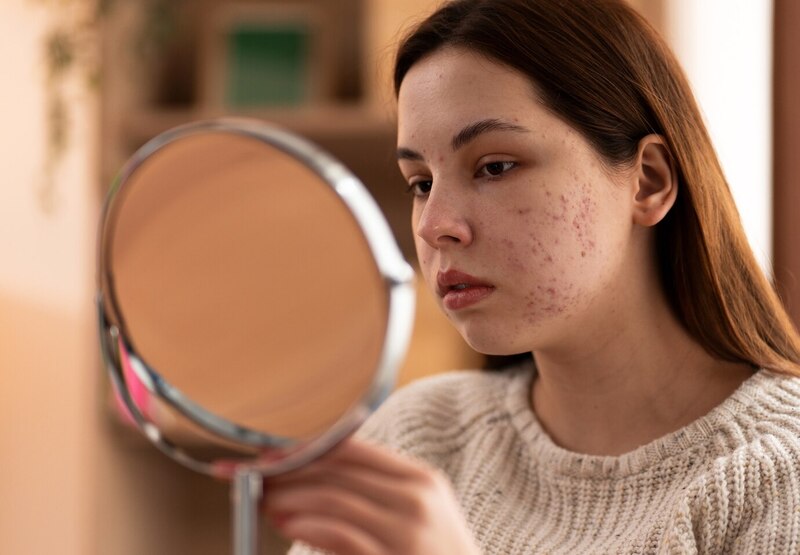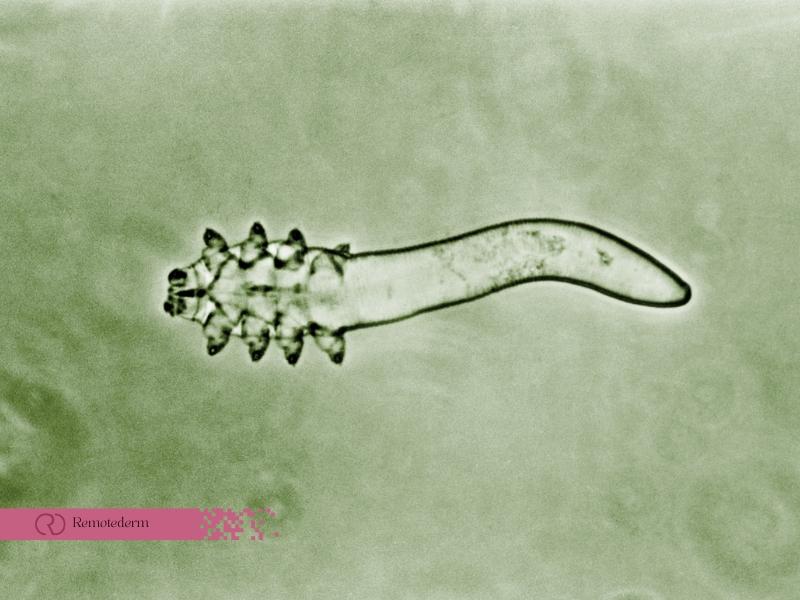Demodex Brevis, a microscopic mite, has garnered attention due to its ability to reside within the oil glands and hair follicles of humans. While these mites are a natural component of the human skin biome, their overpopulation can lead to various skin issues and discomforts. Canadians, particularly those experiencing varying climatic conditions across the country, are not exempt from this concern. Understanding its symptoms, treatment options, life cycle, and preventive measures is crucial for managing Demodex Brevis infestation effectively. In this article, we’ll take a deep dive into the causes, treatments, and prevention methods for Demodex Brevis, focusing on resources and strategies available in Canada.
What is Demodex Brevis?
Demodex Brevis is a type of mite that resides in the oil glands and hair follicles of humans. While these microscopic creatures are a natural part of the human skin biome, an overpopulation of Demodex brevis can lead to various skin issues and discomforts. Understanding the symptoms, treatment options, life cycle, and preventive measures is crucial for managing Demodex brevis infestation effectively.
Symptoms of Demodex Brevis Infestation
Identifying Demodex brevis symptoms can be challenging as they often mimic other common skin conditions. This mite infestation manifests in various ways, causing discomfort and distress to affected individuals. Understanding the diverse symptoms associated with Demodex brevis is crucial for prompt diagnosis and effective management.
1. Persistent Acne
One of the hallmark signs of Demodex brevis infestation is the presence of persistent acne that does not respond to conventional treatments. These acne breakouts often occur in clusters, particularly in areas where Demodex brevis colonies thrive, such as the face, especially the forehead, cheeks, and chin. The mites contribute to inflammation and pore blockages, leading to stubborn acne lesions that can be both painful and unsightly.
2. Rosacea Flare-Ups
Another common manifestation of Demodex brevis infestation is rosacea flare-ups. Rosacea is a chronic skin condition characterized by facial redness, visible blood vessels, and small, pus-filled bumps. Demodex brevis mites are known to exacerbate rosacea symptoms by triggering inflammation and immune responses in the skin. Individuals with rosacea may experience heightened sensitivity and persistent flushing, particularly in the central face area.

3. Unexplained Hair Loss
Demodex brevis infestation can also contribute to unexplained hair loss, especially in areas where the mites proliferate. The scalp is a common site for Demodex brevis colonization, leading to follicular damage and hair thinning over time. Individuals may notice increased shedding, bald patches, and overall reduction in hair volume.
4. Seeking Professional Evaluation
Canadians experiencing Demodex brevis infestation due to persistent skin issues such as acne, rosacea flare-ups, unexplained hair loss, or even require online rosacea treatment, are recommended to seek prompt medical evaluation. Consulting a dermatologist specializing in diagnosing and treating skin conditions can provide invaluable insights and personalized treatment plans. Dermatologists possess the expertise to conduct thorough examinations, including skin scrapings and microscopy, to confirm the presence of Demodex brevis mites and delineate the most effective course of action tailored to your specific needs.
Treatment Options for Demodex Brevis Infestation
Addressing Demodex brevis infestation requires a multifaceted approach that encompasses both conventional treatments and natural remedies. Understanding the available options is crucial for effectively managing symptoms and reducing mite populations.
Conventional Treatments
Conventional treatments for Demodex brevis infestation often involve the use of topical creams and oral medications to eradicate mites and alleviate associated symptoms:
- Topical Creams and Lotions: Dermatologists frequently prescribe creams and lotions containing sulfur or permethrin to kill Demodex brevis mites residing on the skin’s surface. These medications work by disrupting the mites’ ability to reproduce and thrive in the hair follicles and sebaceous glands. Regular application of these topical treatments can help reduce mite populations and alleviate symptoms such as itching and inflammation.
- Oral Medications: In cases of severe Demodex brevis infestation, dermatologists may recommend oral medications such as ivermectin. Ivermectin is an antiparasitic medication that targets mites within the body, effectively reducing their numbers and controlling symptoms. Oral medications are typically reserved for individuals with extensive mite infestations or those who have not responded adequately to topical treatments.
Natural Remedies
In addition to conventional treatments, several natural remedies may help reduce Demodex brevis populations and alleviate symptoms:
- Tea Tree Oil: Tea tree oil, renowned for its antimicrobial properties, is a popular natural remedy for Demodex brevis infestation. Applying diluted tea tree oil to affected areas can help kill mites and reduce inflammation. The antimicrobial action of tea tree oil helps disrupt the mites’ life cycle and prevent further proliferation.
- Regular Cleansing: Maintaining proper hygiene is essential for controlling Demodex brevis infestation. Regular cleansing with mild, non-comedogenic cleansers helps remove excess oil, dirt, and dead skin cells, creating an inhospitable environment for mites to thrive.

Understanding the Life Cycle of Demodex Brevis
Comprehending the Demodex brevis life cycle is paramount for developing targeted treatment and prevention strategies. This mite species undergoes several stages of development, each contributing to the perpetuation of the infestation cycle:
- Egg: Female mites lay eggs in the hair follicles or sebaceous glands.
- Larva: Upon hatching, larvae emerge from the eggs and feed on skin oils and cellular debris.
- Nymph: Larvae develop into nymphs, which undergo several molts before reaching maturity.
- Adult: Mature Demodex brevis mites reproduce, perpetuating the infestation cycle.
Preventive Measures Against Demodex Brevis Infestation
Preventing Demodex brevis infestation requires a proactive approach to maintaining skin health and minimizing exposure to potential sources of mites. By implementing comprehensive preventive measures, individuals can reduce the risk of infestation and promote overall skin wellness:
- Practice good skin hygiene by washing your face with a gentle cleanser twice daily to remove excess oil and impurities.
- Avoid sharing personal items such as towels and pillows, as Demodex brevis mites can transfer from one person to another through direct contact.
- Use oil-free skincare products to minimize the risk of clogged pores and excessive oil production, which can create an ideal environment for Demodex brevis proliferation.
Final Thoughts
In conclusion, understanding Demodex Brevis infestation is crucial for maintaining optimal skin health and wellness. From identifying symptoms and exploring treatment options to comprehending the mite’s life cycle and implementing preventive measures, addressing Demodex Brevis requires a multifaceted approach. By recognizing the signs of infestation, seeking professional evaluation, and adopting proactive skin hygiene practices, individuals can mitigate the risk of Demodex Brevis proliferation and promote overall skin wellness. Embracing a holistic approach to Demodex Brevis management empowers individuals to take control of their skin health and achieve long-term relief from discomfort and skin issues.
FAQs
Can Demodex Brevis Cause Eye Problems?
Yes, Demodex Brevis infestation near the eyes may cause itching, redness, and irritation, potentially leading to conditions like blepharitis and conjunctivitis.
Are Demodex Brevis Mites Contagious?
While not highly contagious, direct contact with infected individuals or sharing personal items may facilitate mite transmission.
Can Demodex Brevis Lead to Systemic Health Issues?
Research suggests potential links between Demodex mites and systemic health issues like immune dysregulation and inflammatory responses, but further studies are needed for confirmation.
Do Demodex Brevis Mites Prefer Certain Environments?
Demodex Brevis mites thrive in warm, humid environments, but individual hygiene practices and immune function also influence infestation severity.
